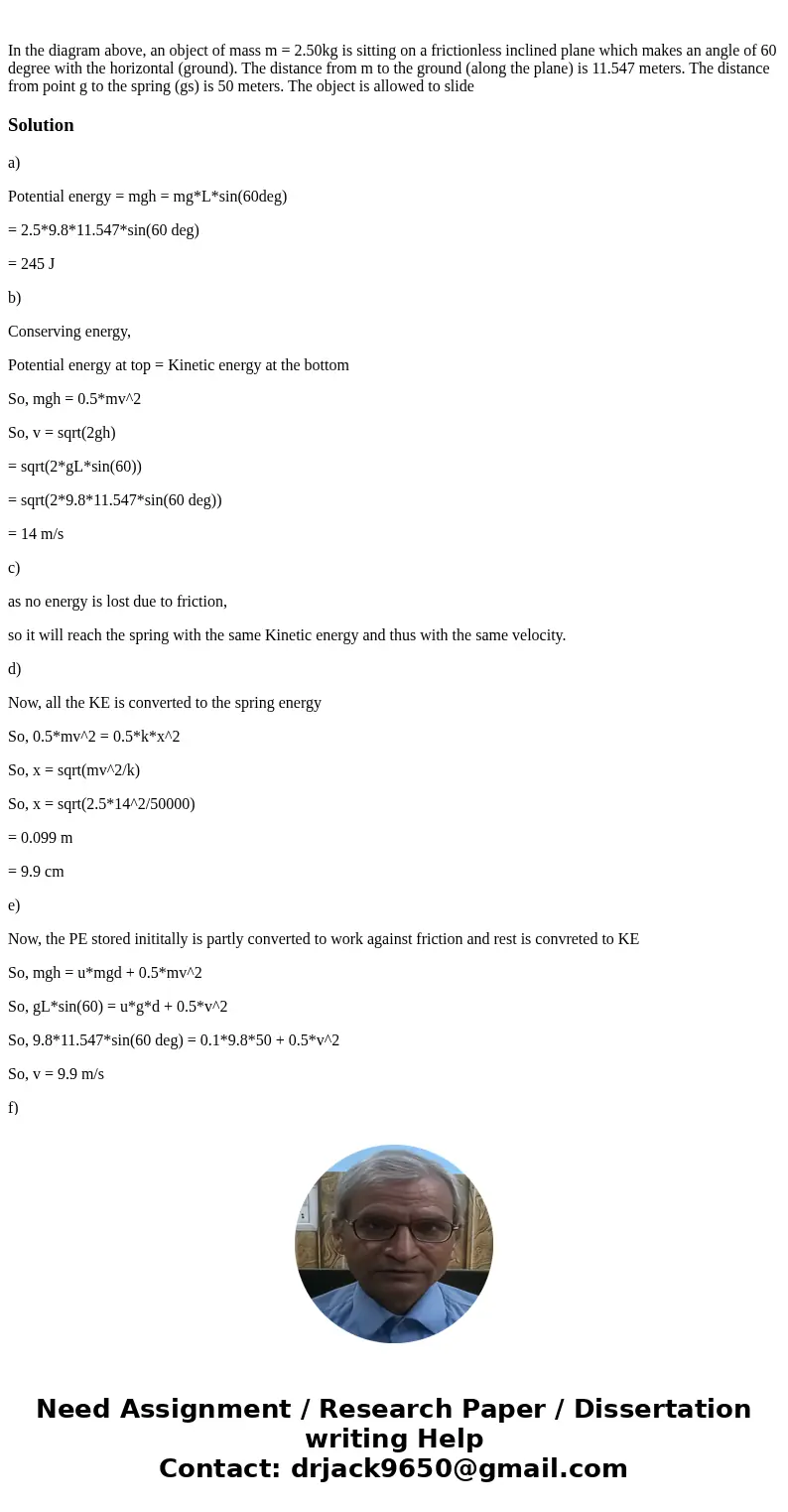In the diagram above an object of mass m 250kg is sitting o
Solution
a)
Potential energy = mgh = mg*L*sin(60deg)
= 2.5*9.8*11.547*sin(60 deg)
= 245 J
b)
Conserving energy,
Potential energy at top = Kinetic energy at the bottom
So, mgh = 0.5*mv^2
So, v = sqrt(2gh)
= sqrt(2*gL*sin(60))
= sqrt(2*9.8*11.547*sin(60 deg))
= 14 m/s
c)
as no energy is lost due to friction,
so it will reach the spring with the same Kinetic energy and thus with the same velocity.
d)
Now, all the KE is converted to the spring energy
So, 0.5*mv^2 = 0.5*k*x^2
So, x = sqrt(mv^2/k)
So, x = sqrt(2.5*14^2/50000)
= 0.099 m
= 9.9 cm
e)
Now, the PE stored inititally is partly converted to work against friction and rest is convreted to KE
So, mgh = u*mgd + 0.5*mv^2
So, gL*sin(60) = u*g*d + 0.5*v^2
So, 9.8*11.547*sin(60 deg) = 0.1*9.8*50 + 0.5*v^2
So, v = 9.9 m/s
f)
Again, setting up the energy equation:
0.5*mv^2 = 0.5*k*x^2
So, x = sqrt(mv^2/k)
= sqrt(2.5*9.9^2/50000)
= 0.07 m
= 7 cm


 Homework Sourse
Homework Sourse